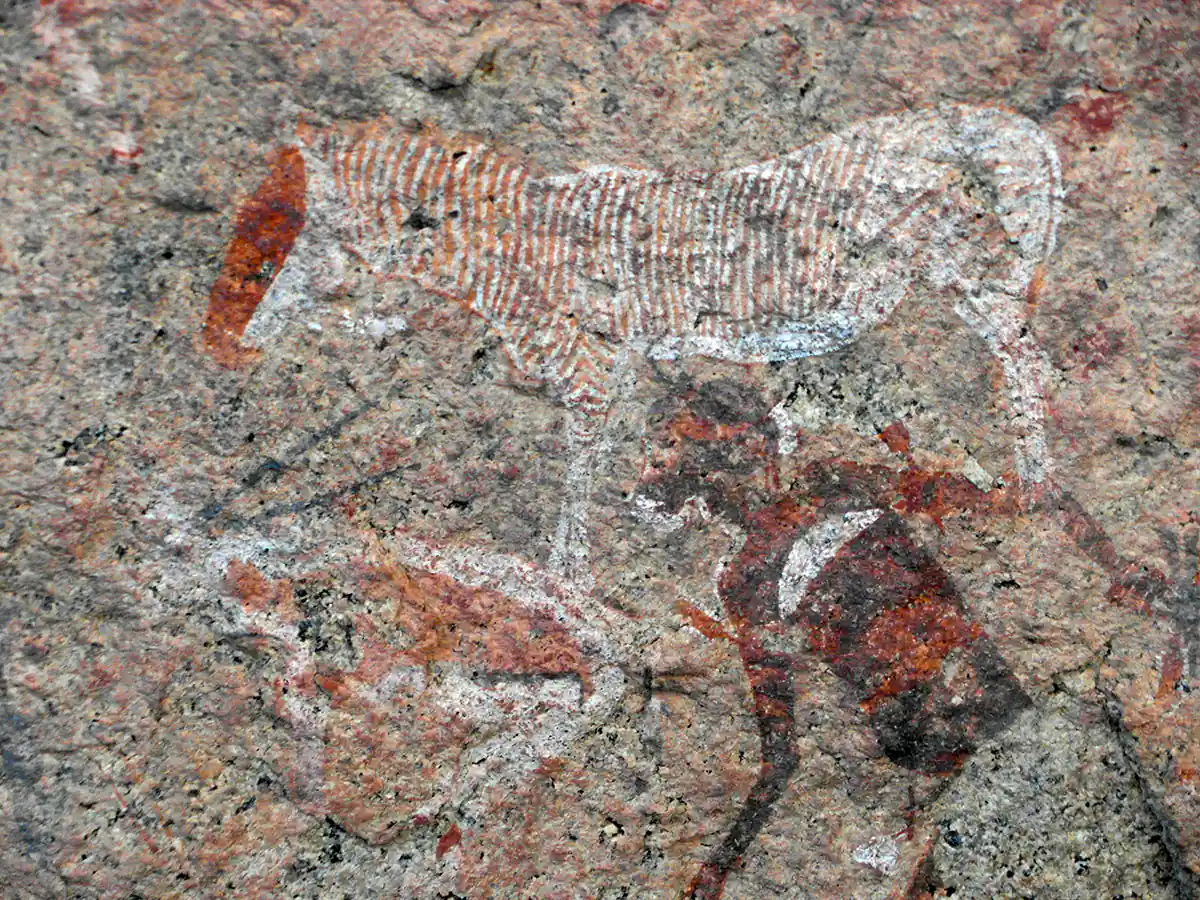Sacred Sites of Namibia
Namibia: Sacred Art, Ancestral Whispers, and Diverse Spiritual Landscapes
Namibia, a land of stark natural beauty and diverse cultures, offers a compelling exploration of sacred sites. Ancient rock art sites bear witness to millennia of human presence and spiritual expression. These places, along with sites reflecting more recent religious influences, reveal Namibia's complex relationship with faith and cultural heritage.
Spitzkoppe Cave Paintings
Known to the San people (Bushmen) as "Bushman's Paradise," Spitzkoppe's dramatic granite formations harbor several rock art sites. Intricate animal figures, human forms, and symbolic shapes reveal the rich tradition of the San people, offering not only artistic splendor but also insights into their spiritual beliefs and their reverence for the natural world. Access to some of these sites often requires careful preservation efforts and may necessitate engaging local guides or visiting designated, well-protected locations.
Twyfelfontein Cave Etchings
The UNESCO World Heritage Site of Twyfelfontein showcases thousands of remarkable rock engravings across a rugged valley. Believed to date back several millennia, they feature detailed depictions of animals, geometric patterns, and human-like forms. Experts debate interpretations, but a clear link to hunter-gatherer rituals and a shamanistic tradition seems evident. These etchings speak to the continuity of beliefs over a vast period and are a testament to the profound and long-lasting connection the land holds for different peoples.
Uis Cave Paintings
While less widely known than other locations, the White Lady at Uis Cave and its accompanying rock paintings remain captivating. With ongoing scholarly debate on their origins, the images provide hints at diverse past cultural influences within Namibia. The mysterious "White Lady" and the surrounding figures spark wonder and curiosity about those who came before, the ritual significance of the caves, and the changing faces of spiritual practices within the region.
Brandberg Mountain
Namibia's highest mountain, Brandberg (meaning "Fire Mountain"), holds spiritual significance for the San people. Believed to be the dwelling place of their supreme deity, accessing the mountain's peak and specific sites often entails seeking permission from local San communities.
Christuskirche (Windhoek)
German and South African colonists left their mark on Namibia's landscape, resulting in numerous churches and missions of various denominations. This prominent German Lutheran church serves as an iconic landmark. But beyond its architectural beauty, it speaks to the lasting influence of European settlers and the colonial period within Namibia's religious landscape.
Sacred Landscapes and Traditional Beliefs
Across Namibia, many natural features retain cultural and spiritual significance for indigenous communities. Sites associated with myths, ancestor veneration, and spiritual ceremonies can be found nestled within desert landscapes and mountains. For groups like the Herero and Himba people, these sites connect deeply with their history, social structure, and traditional ways of life. While access for outsiders might be limited out of respect for their practices, their existence remains crucial to understanding Namibian spiritual diversity.
Note:
Namibia's landscape speaks with whispers of past spiritual beliefs and evolving identities. From the vibrant artwork left on ancient cave walls to churches representing colonial forces, these sites highlight the intricate interplay of faiths, indigenous knowledge systems, and reverence for the natural world. When considering visits to sacred sites in Namibia, respecting local customs and communities is paramount. Some locations require permissions or a guide, and preservation of fragile ancient art is vitally important.

Martin Gray is a cultural anthropologist, writer and photographer specializing in the study of pilgrimage traditions and sacred sites around the world. During a 40 year period he has visited more than 2000 pilgrimage places in 160 countries. The World Pilgrimage Guide at sacredsites.com is the most comprehensive source of information on this subject.

